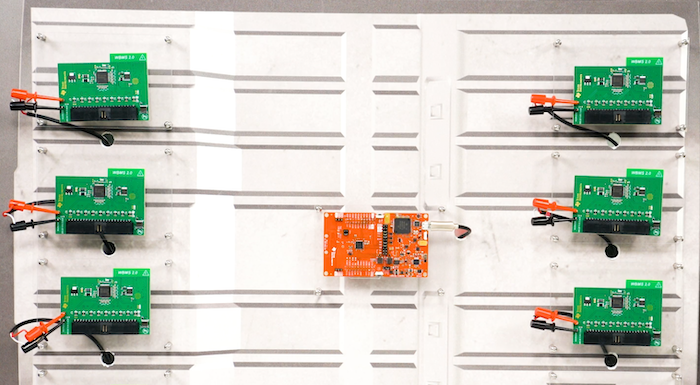The major automotive electronic component vendors are going wireless for their battery management systems. Why?
February 2, 2021

Recently, Texas Instruments announced a new wireless battery management system (BMS) for electric vehicles. A typical BMS performs the primary functions of battery cell balancing, cell health and wear leveling, charge and discharge monitoring, and safety assurance. TI’s offering adds to this list with new functionality for wireless communication via its SimpleLInk 2.4-GHz wireless MCU.
The wireless nature of the offering is unique. The company’s wireless protocol for the BMS is implemented using the CC2662R-Q1 wireless MCU, which provides a purported network availability of greater than 99.999% and a network restart of 300-ms maximum availability.
With this wireless MCU, dedicated time slots that provide high throughput and low latency protect data from loss or corruption while enabling multiple battery cells to send voltage and temperature data to the main MCU. When combined with TI’s security offerings, automakers can mitigate potential threats such as key exchange and refreshment; unique device authentication; debug security; software IP protection with a joint test action group (JTAG) lock; Advanced Encryption Standard (AES) 128-bit cryptographic acceleration, and message integrity checks.
Switching from traditional wired to wireless connectivity offers a lot to the automotive industry.
Most noticeably, automakers can reduce the complexity of their designs, improve reliability and reduce vehicle weight to extend driving range. Designs can be scaled across production models using a complete wireless BMS package the hardware and an evaluation board, software, and functional safety enablers such as a functional safety manual and failure mode and effects analysis (FMEA), among other things.
TUV SUD, a well-known German functional safety authority, provided the independent evaluation of the quantitative and qualitative error-detection performance of TI’s wireless BMS functional safety concept. This evaluation is necessary for automakers to achieve Automotive Safety Integrity Level (ASIL) D, the highest level of International Organization for Standardization (ISO) 26262 certification.
Using a new wireless protocol, developed specifically for the wireless BMS use case, TI's wireless BMS functional safety concept addresses communication error detection and security. The proprietary protocol via the CC2662R-Q1 wireless MCU enables data exchange between a host system processor and the company’s newly announced battery monitor and balancer.
But TI isn’t the only chip provider providing a wireless battery management system. Late last year, Analog Devices announced that its wireless BSM would debut on General Motors’ EV production vehicles. Renesas also offers a new IC for battery management in hybrid, electric vehicles. (Image Source: TI, Development Kit)
|
Wireless BMS development kit. |
John Blyler is a Design News senior editor, covering the electronics and advanced manufacturing spaces. With a BS in Engineering Physics and an MS in Electrical Engineering, he has years of hardware-software-network systems experience as an editor and engineer within the advanced manufacturing, IoT and semiconductor industries. John has co-authored books related to system engineering and electronics for IEEE, Wiley, and Elsevier.
About the Author(s)
You May Also Like






